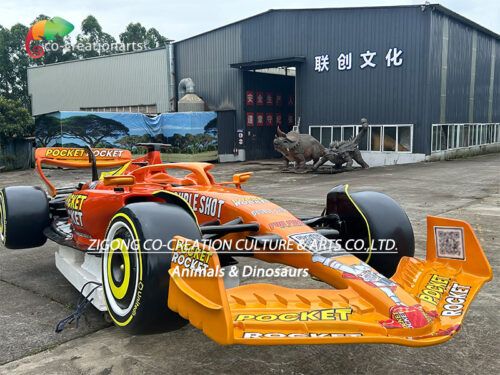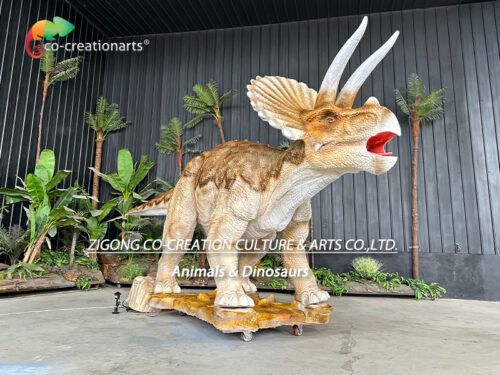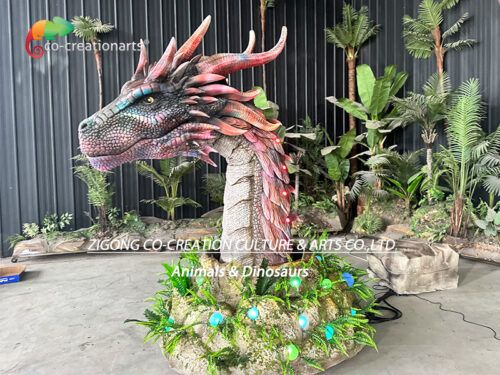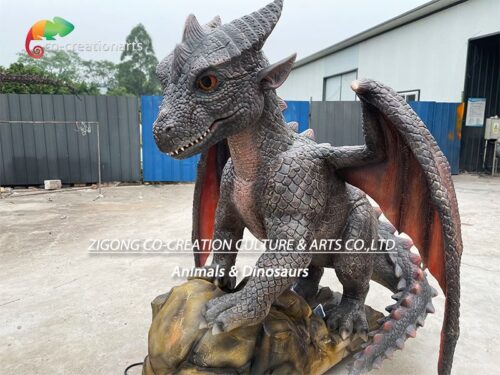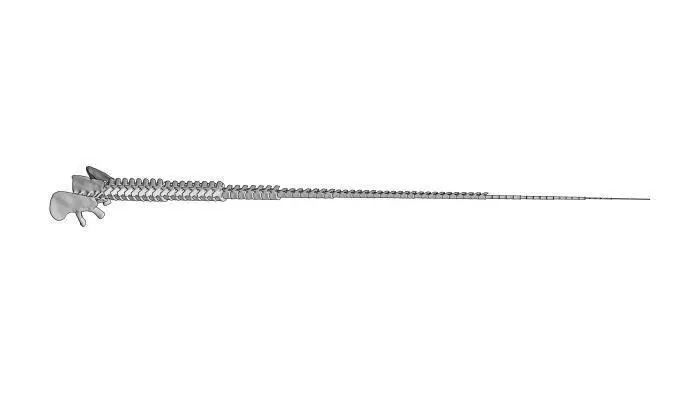
by artfty | Dec 11, 2022 | Paleontological Science

The starting position of simulated acceleration at the tail of the model in this study (image from Simone Conti). Springer Nature
A new paleontological modeling study published in Scientific Reports, an open-access academic journal owned by Springer Nature, suggests that Diplodocus ( Diplodocus), a plant-eating dinosaur with a long neck and tail, may have been able to move its tail and use it as a thick whip at speeds of up to 33 meters per second (over 100 kilometers per hour). The finding contradicts a past study that proposed a hypothetical structure at the tail end of dipterosaurs, similar to a whiptail hair cluster, that could travel faster than the speed of sound (340 meters per second) and cause a mini-sonic boom.
Corresponding author Simone Conti of the University of New Lisbon in Portugal and the Polytechnic University of Milan in Italy, along with colleagues and collaborators, simulated the tail movement of Diplodocus using a model based on five fossil diplodocus specimens. The tail of the model, which is more than 12 meters long and weighs 1,445 kilograms, is made up of 82 cylinders representing vertebrae attached to the base of an immovable hip bone. When the base of the tail moves in an arc, it produces a whipping motion that can reach a maximum speed of 33 meters per second – more than 10 times slower than the speed of sound in standard air, unable to produce a supersonic boom.
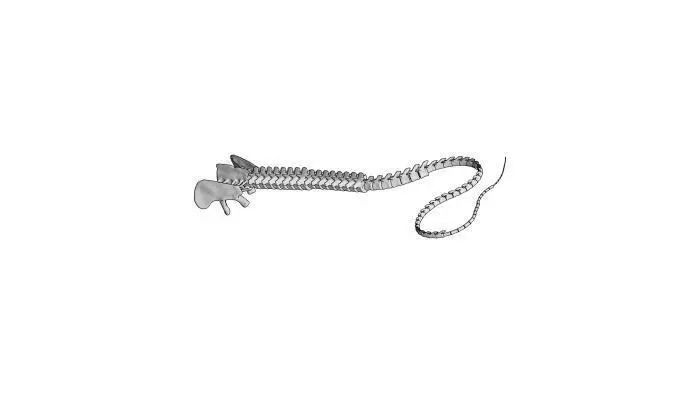
The authors also tested whether the dinosaur’s model tail could withstand the pressure of high enough speeds to create a sonic boom. They found that the thin whip-like tail could not survive a maximum speed of 340 meters per second without breaking. They then tested three hypothetical metre-long structures (mimicking the structural ends of a thick whip), including three segments of skin and keratin, a flail of woven keratin filaments and soft tissue, added to the end of the model’s tail to see if it could move at the speed of sound without breaking. It turned out that no structure could withstand the pressure at 340 meters per second without breaking the tail.
Together, the modeling findings suggest that the Diplodocus tail may not have been fast enough to create a small sonic boom, the paper’s authors say. They speculate, however, that the Diplodocus could still have moved its tail quickly as a defensive weapon or to fight with other Diplodocus.
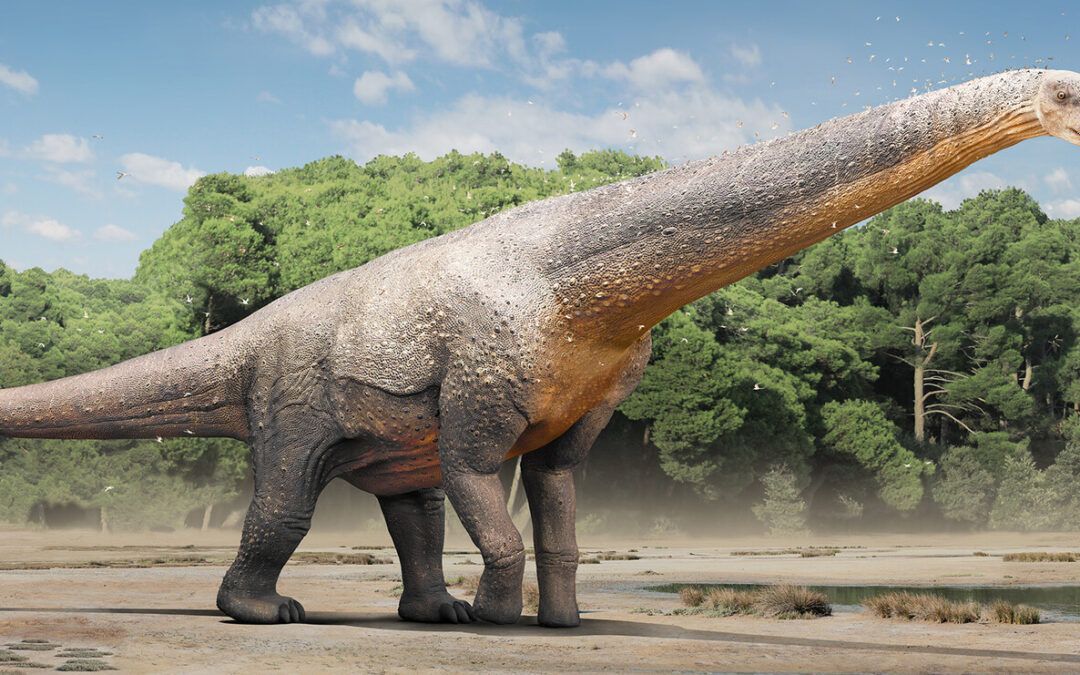
by artfty | Dec 10, 2022 | Paleontological Science
This is the largest dinosaur that ever lived. It could easily crush a 12-ton mapulon. A footprint pit was taller than a full-grown man. Today we’re going to meet this 93-million-year-old Argentinosaurus.
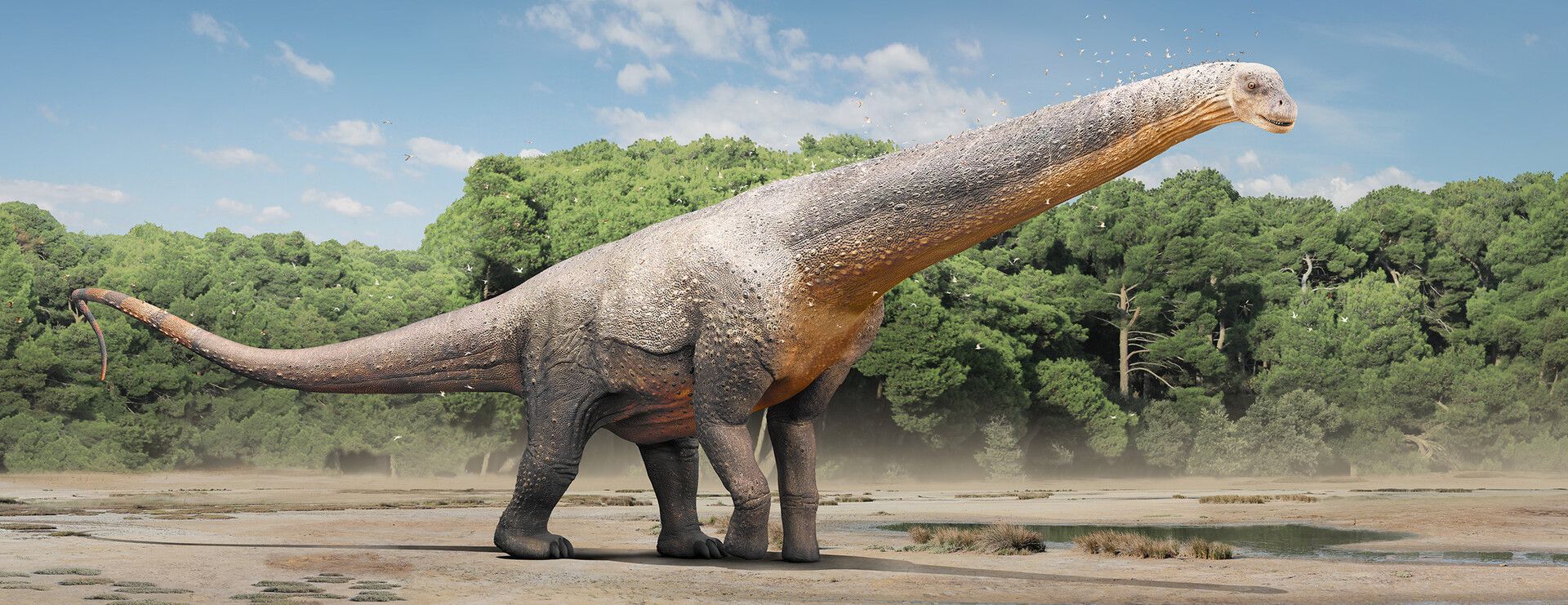
Its body length was 35 to 43 meters, equivalent to our current 14-story building, and its weight was about 88 tons, equivalent to ten Tyrannosaurus Rex. Its stomach was as big as an elephant, it ate two tons of leaves every day, and one vertebrae was taller than an adult man.
The body of an Argentinosaurus can feed the surrounding dinosaurs for ten days, and it can feed a thousand people for three days. Due to its huge body, it moves slowly, with a maximum speed of seven kilometers per hour. This huge body is a walking delicacy, which makes many carnivorous dinosaurs salivate, and when they find an opportunity, they will pounce on it and bite it off for a delicious meal.
Their front PAWS have a big curved claw, used for defense and to dig holes to lay eggs, a group of Argentinosaurus walking, can be heard ten kilometers away their sound, as if an earthquake, the baby Argentinosaurus birth weight is only five kilograms, but their growth rate is amazing, an average of 40 kilograms per day growth rate, can grow to about 70 tons by the age of 40.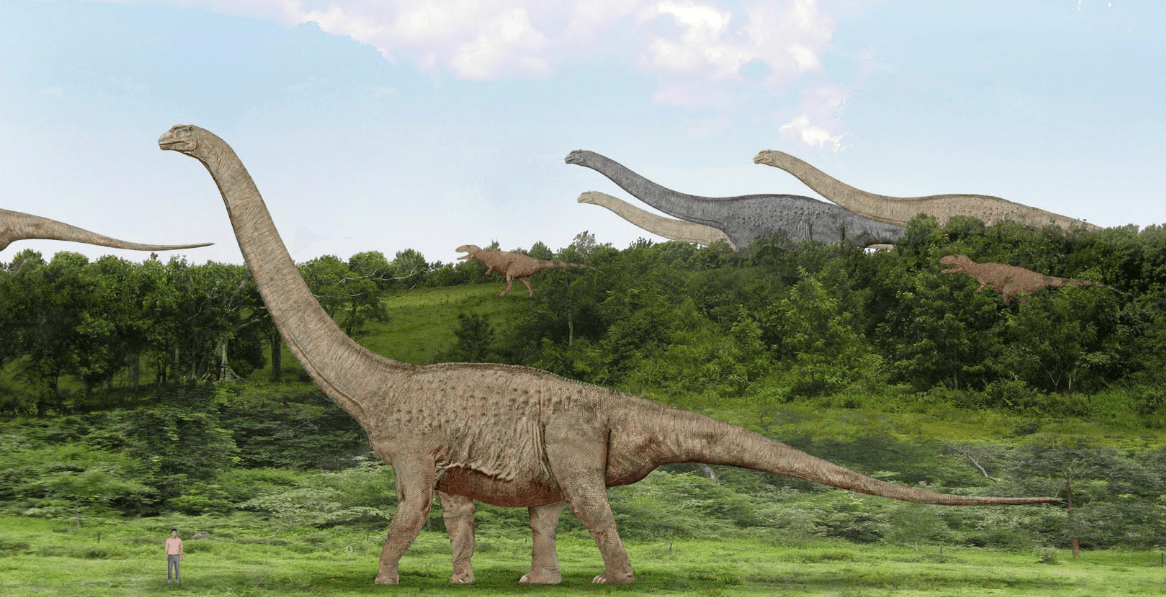
But their children were in a bad way before they grew up, and because of the Argentinosaurus’ large size, lack of aggression and slow movement, most of their offspring became the food of many carnivorous dinosaurs at an early age.
If a group of Argentinosaurus find a water source, and they go to drink, and they don’t know that there’s a giant crocodile lurking in the water, and they suddenly rush in and bite an Argentinosaurus in the neck, and the group of Argentinosaurus is scared and they break up in a hurry, and a baby Argentinosaurus is stuck in the mud, unable to move, and the giant crocodile comes up behind them and bites the hind leg of the baby, and it keeps tearing, Suddenly a mapron appeared.
He wants his meal, too. Two prehistoric giants are tearing at the baby Argentinosaurus at the same time. The Argentinosaurus behind is worried, but scared, and finally the stronger Mapulon has the baby and is trying to pull it away.
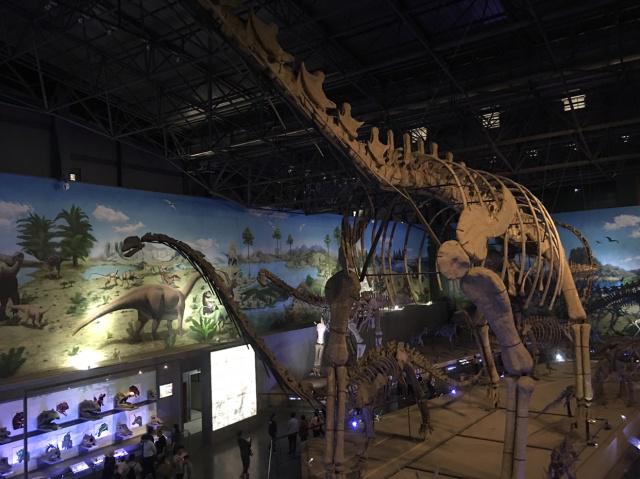
Knowing that they were not aggressive, Mapron met them and tried to frighten them by putting on a brave face, but the Argentinosaurus was so keen, roaring and dropping his legs, that Mapron was finally frightened by the huge pack of Argentinosaurus and left in his dismays. So far, the injured baby Argentinosaurus has been saved. If the huge body of Argentinosaurus is matched with the Tyrannosaurus Rex, the smart brain and the wild, it will be absolutely invincible.
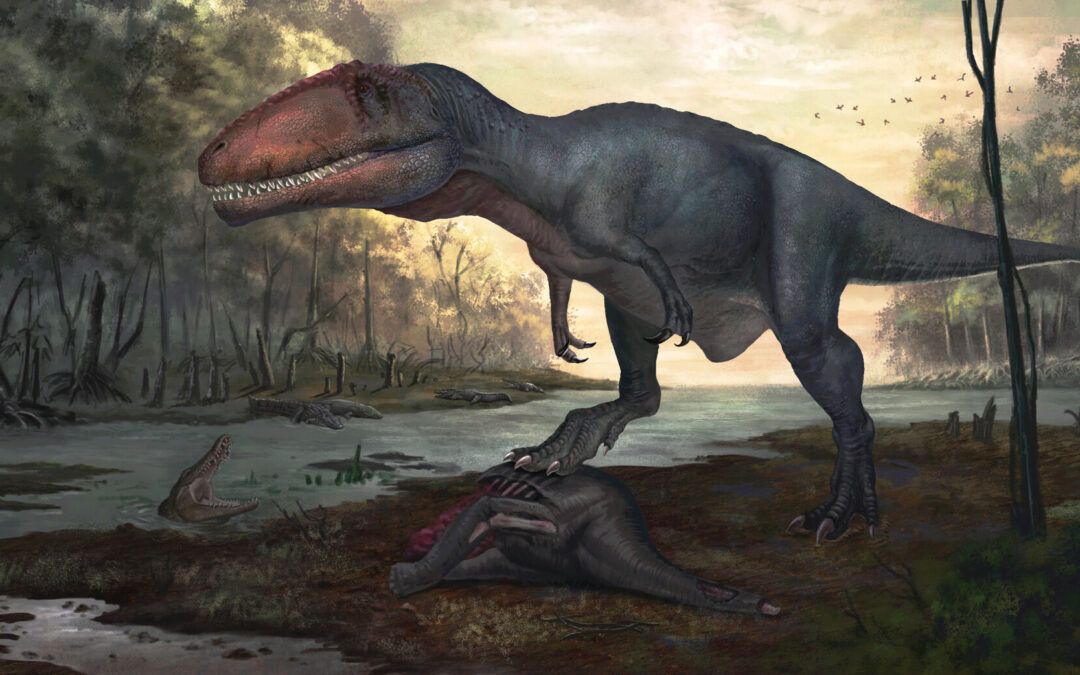
by artfty | Dec 9, 2022 | Paleontological Science
Sharkdon lived from the late Albidans to the early Senorans of the Cretaceous, about 100 million to 93 million years ago.
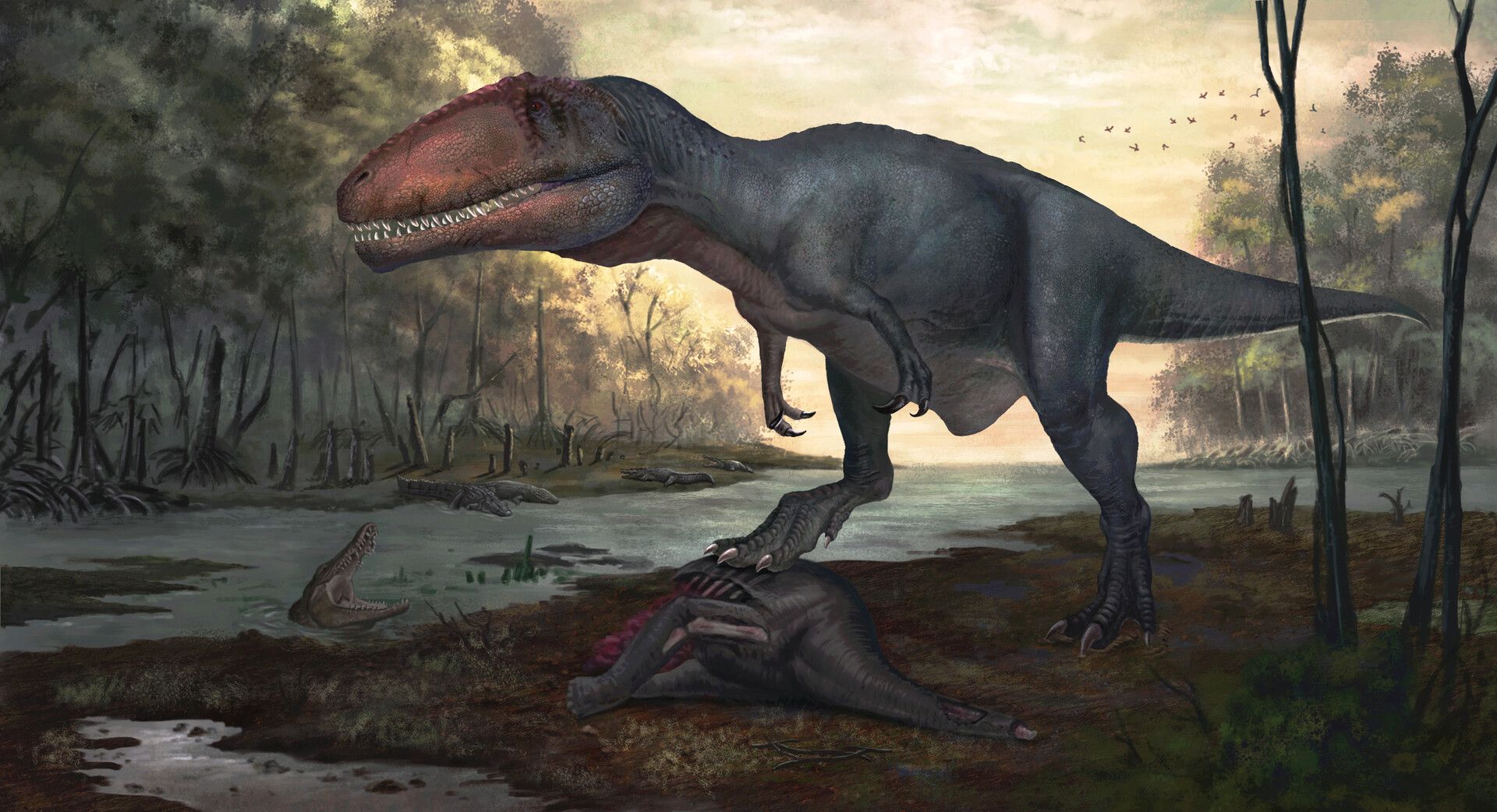
Sharkdon lived at a time when giants, including Spinosaurus 15 meters long, Rupleosaurus 9 meters long, and Sauropod tidal sauropods over 30 meters long, lurked in the water with Emperor crocodiles 12 meters long. Sharkdon probably fed on the giant sauropods of its time.
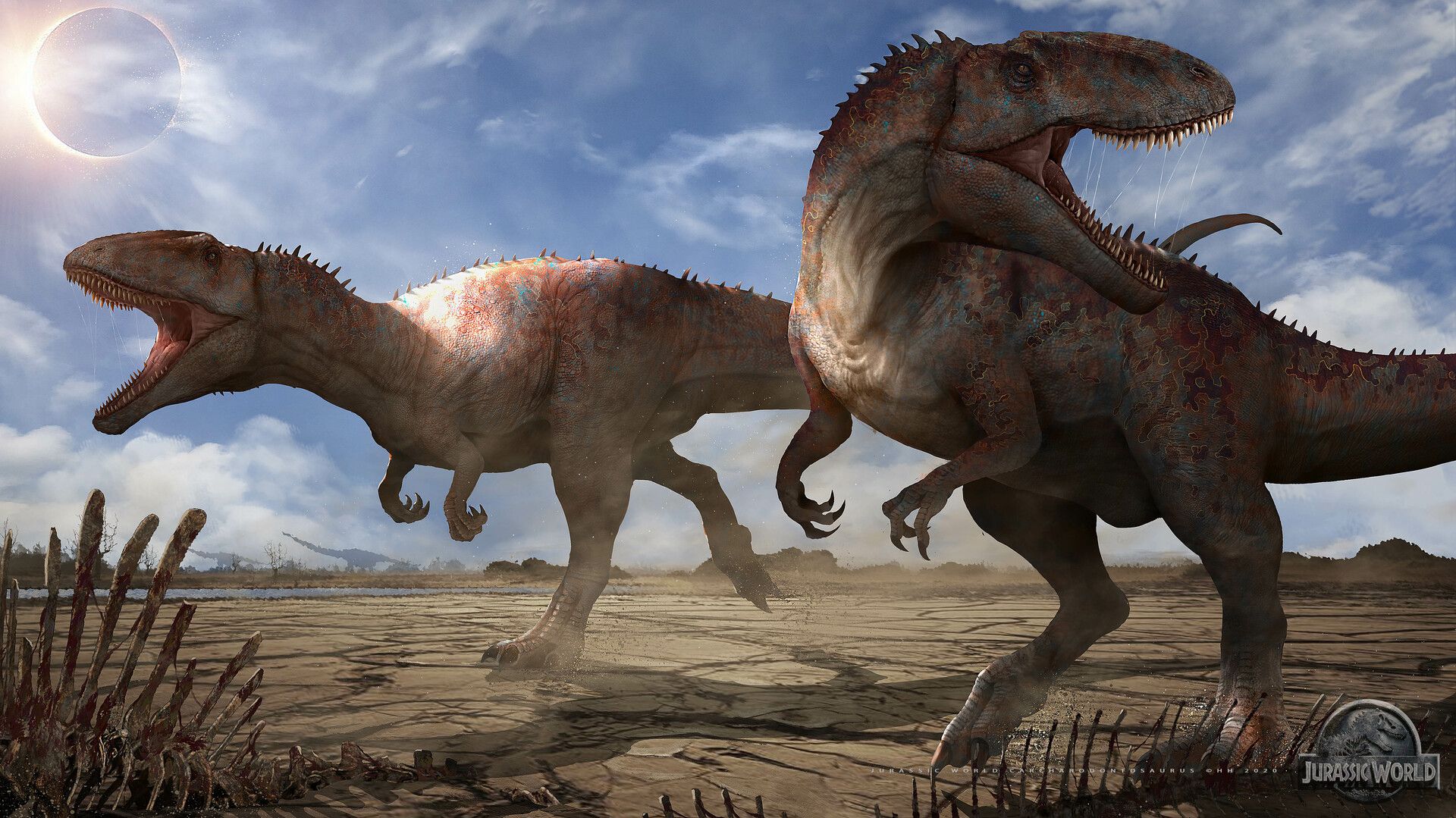
The reason for its name is that it had teeth similar to those of the genus phage, which are not curved, but almost symmetrical on both sides and convex on the leading edge.
Megalodon Ijidi, skull 1.75 meters long ( human to megalodon skull ratio)
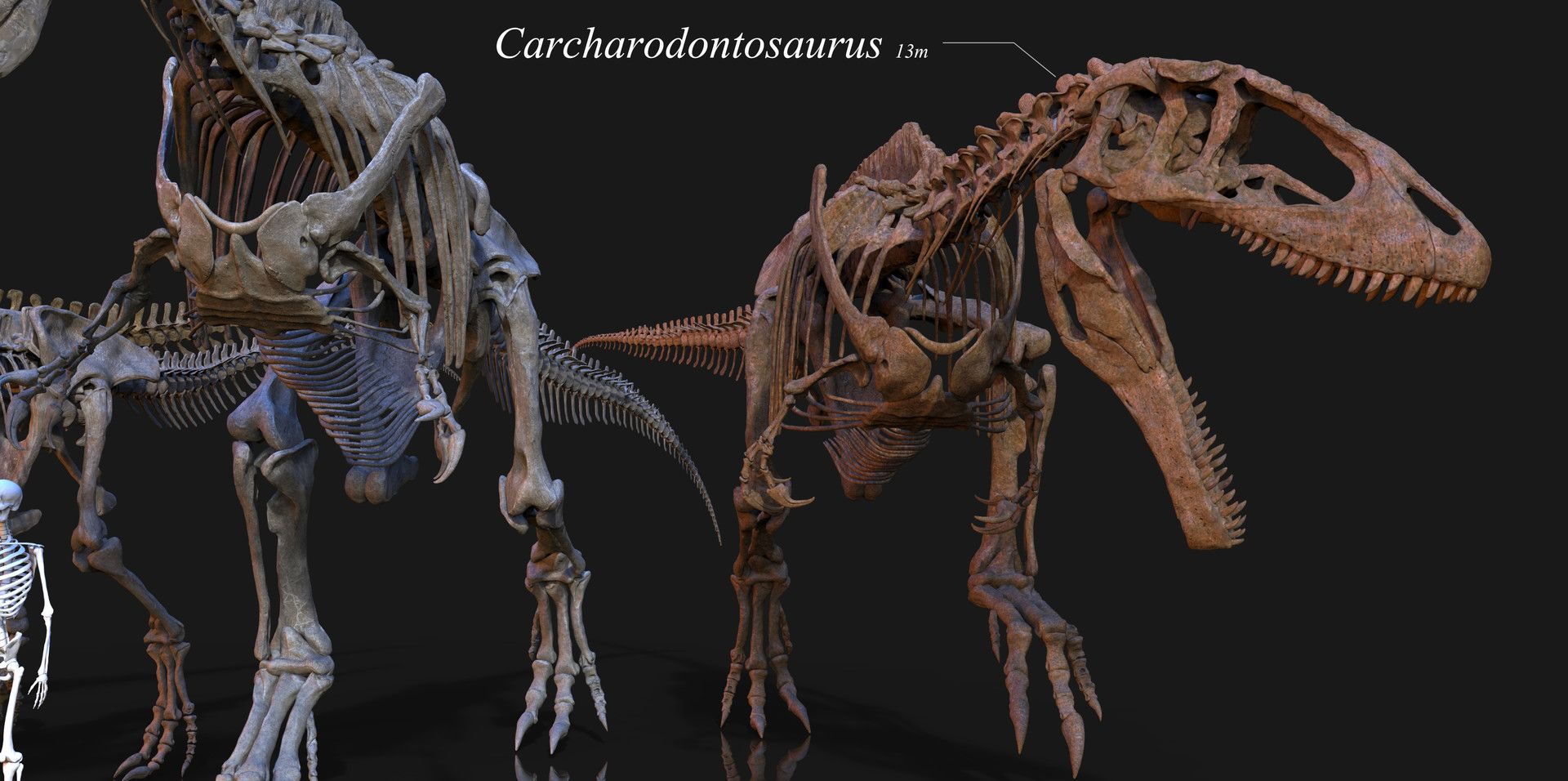
The genus name Carcharo means phage shark, and donto means tooth, the tooth of a phage shark. The teeth of Megalodon were so large that the crown alone could reach more than 5 centimeters, and both sides of the teeth had developed serrations, which were somewhat similar to the modern great white shark, hence the name. The names of both species emphasize where they were found.
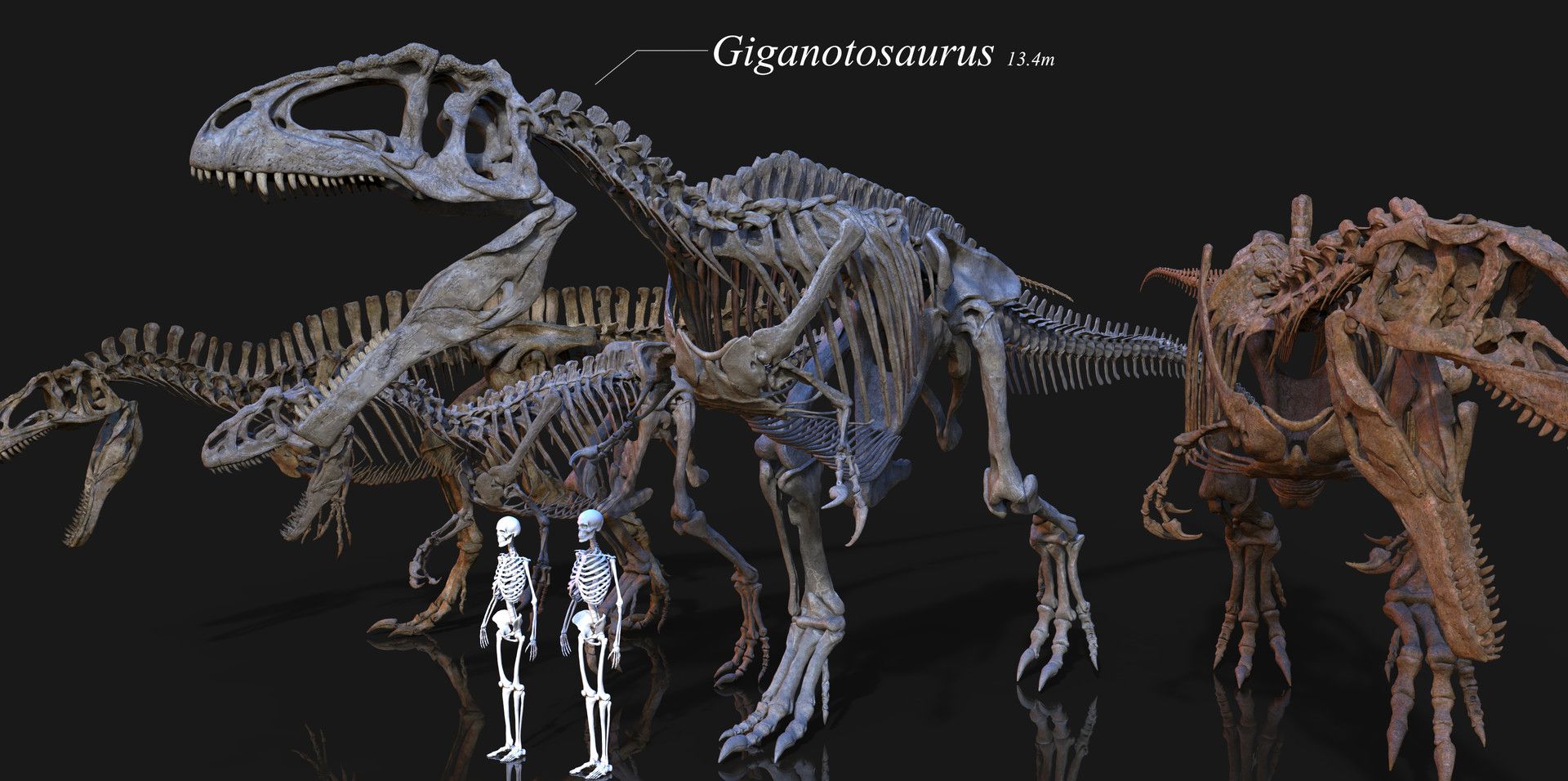
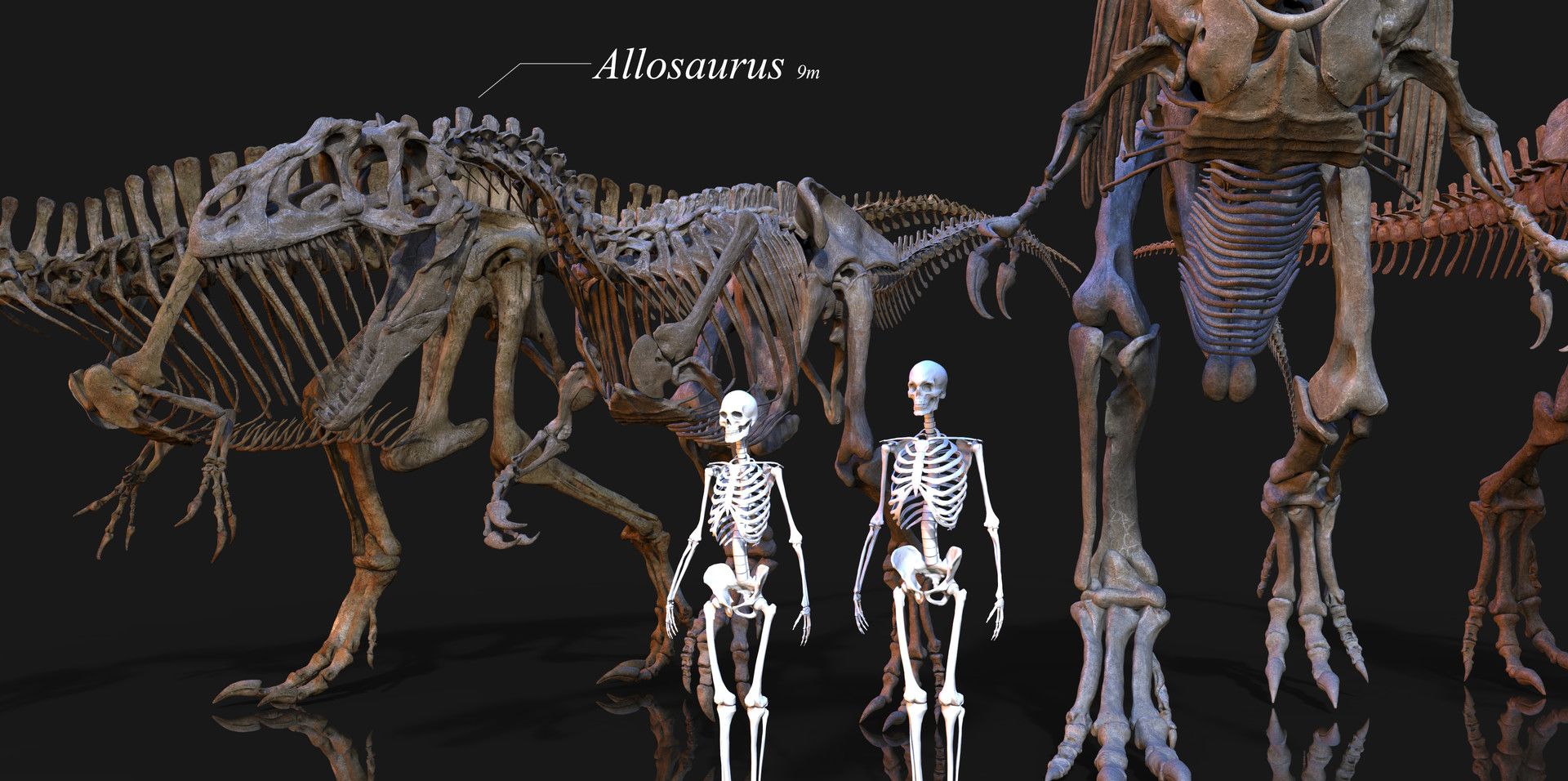 Sharkdon was featured in the documentary Resurrection of the Ancient Giants, but was killed by a Spinosaurus shortly after its appearance. It also makes an appearance in Planet of Dinosaurs. In the film, Shardonosaurus feeds on the tidal sauropods and the Dauntless sauropods, competing with the Emperor and Spinosaurus for prey. The film also shows two sharks fighting over territory. Given the latest developments, however, some of the plot is questionable, such as the fact that Spinosaurus was a semi-aquatic theropod, which was highly specialized in habitat and diet and therefore unlikely to have clashed with Sharkdon over food resources
Sharkdon was featured in the documentary Resurrection of the Ancient Giants, but was killed by a Spinosaurus shortly after its appearance. It also makes an appearance in Planet of Dinosaurs. In the film, Shardonosaurus feeds on the tidal sauropods and the Dauntless sauropods, competing with the Emperor and Spinosaurus for prey. The film also shows two sharks fighting over territory. Given the latest developments, however, some of the plot is questionable, such as the fact that Spinosaurus was a semi-aquatic theropod, which was highly specialized in habitat and diet and therefore unlikely to have clashed with Sharkdon over food resources
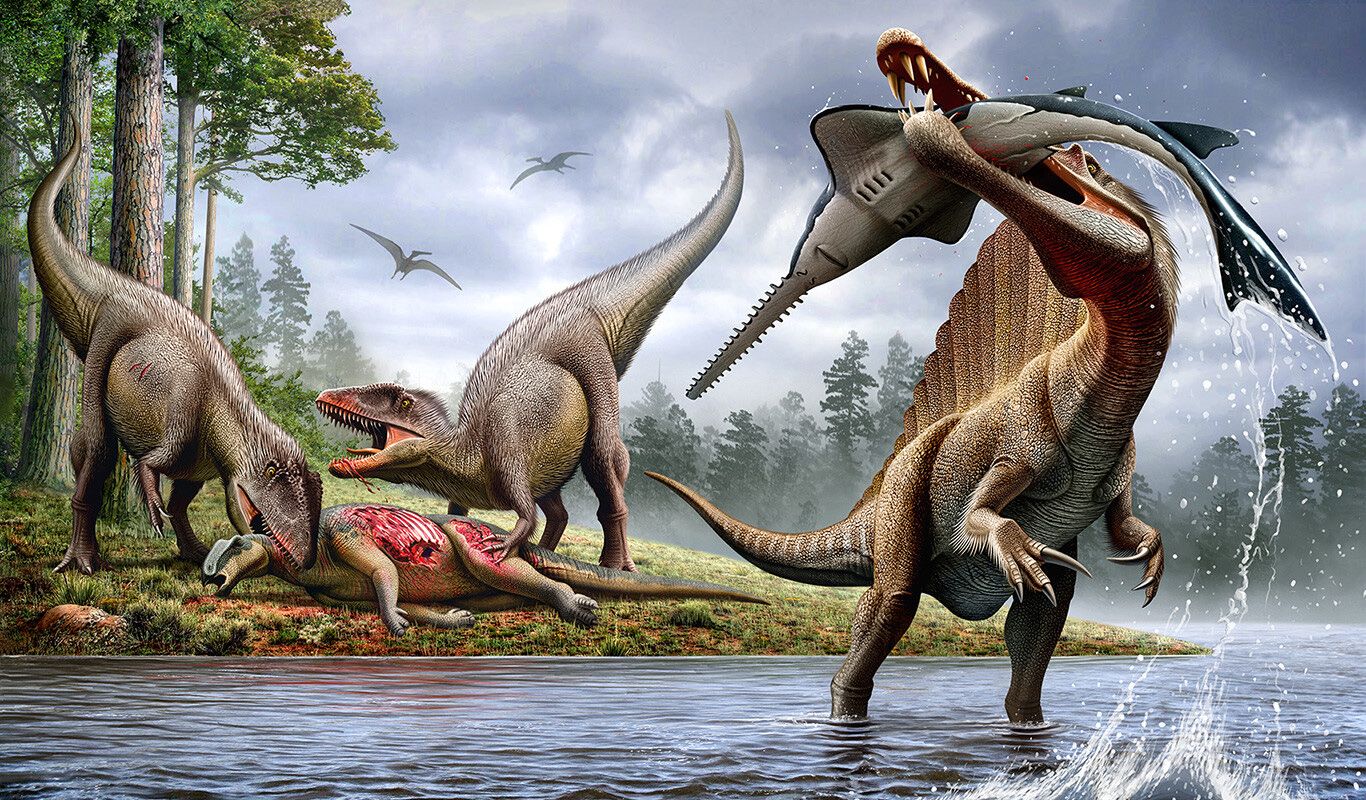
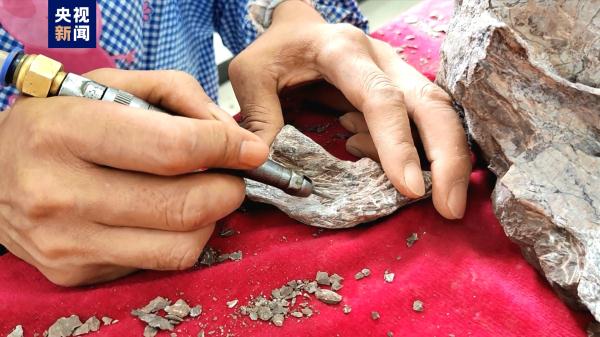
by artfty | Dec 8, 2022 | Paleontological Science
In 2021, a dinosaur fossil from the late Jurassic period was discovered in Dongxing City, Guangxi Province, and the restoration work of the dinosaur fossil is moving forward in a strong and orderly way.
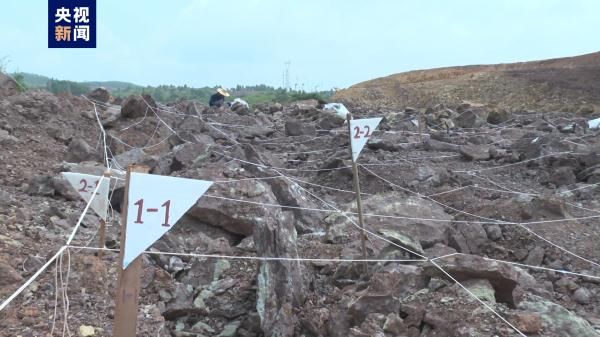
It is understood that 40% of the dinosaur fossils have been basically restored. After the restoration, the fossils will go through multiple processes, including restoration of missing parts, mold making and turning, framing and color restoration, to ensure the accurate presentation of the original shape and structure of the dinosaur bones.
Dongxing dinosaur fossil is the most southern coastal dinosaur fossil found so far, which is very important for the study of paleontological evolution, geological changes, paleogeography and paleoclimate and so on.
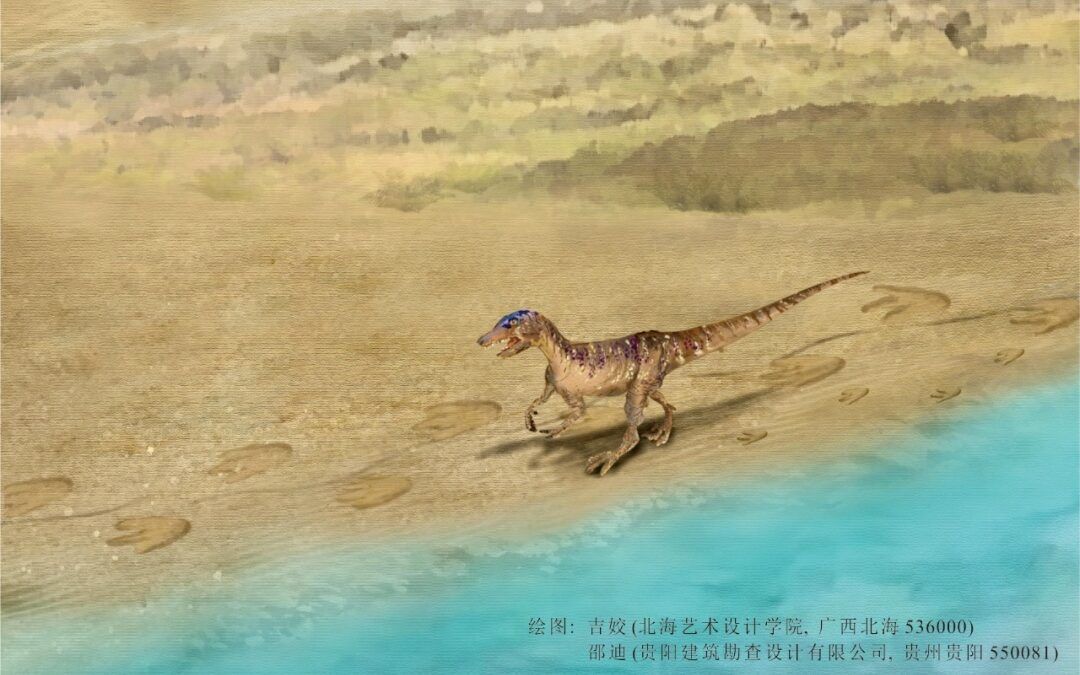
by artfty | Dec 6, 2022 | Paleontological Science
New progress has been made in the study of Mesozoic dinosaur tracks in eastern Tibet, according to the Wuhan Geological Survey Center of the China Geological Survey.
The footprints of the first Jurassic theropod dinosaur in Tibet, discovered in Kaluo District of Changdu City, Tibet, have been officially named as Agnetang Stiphosaurus. The related research results were published in the Earth Science, a famous Chinese geoscience journal.
The first fossil of theropod footprints found in Xizang
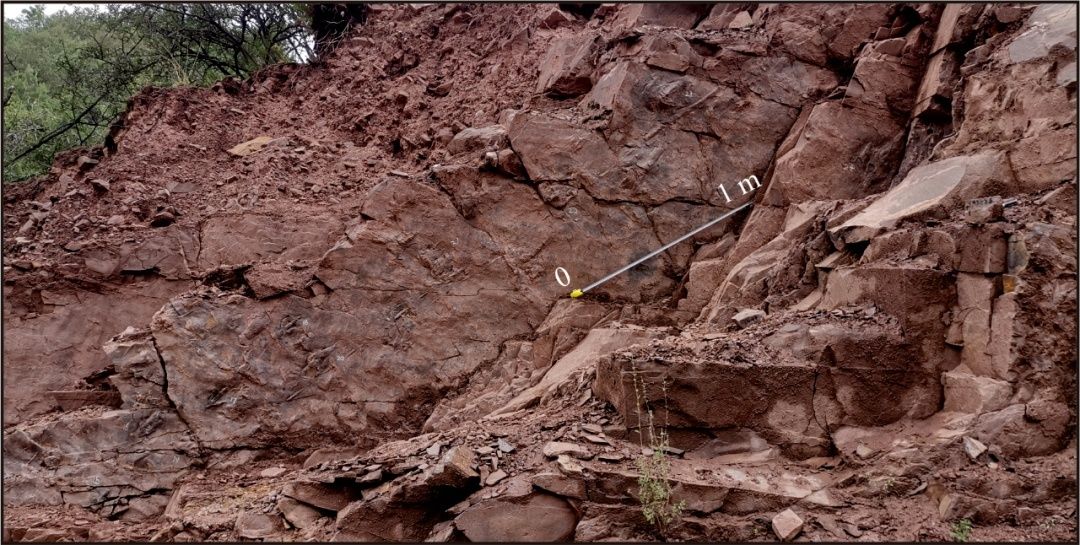
Level exposure of the Anetang fossil point
It is understood that the fossil discovery site is located in Anetang Village, Ritong Township, Karuo District, Qamdo City. It was formed in the middle Jurassic period about 170 million years ago. The fossils are preserved in the bottom of the rock strata with exquisite convex traces, which are partially exposed due to road construction and slope cutting and the collapse of the rock mass in the later period. Under the careful repair of scientific and technical personnel, they can be fully displayed.
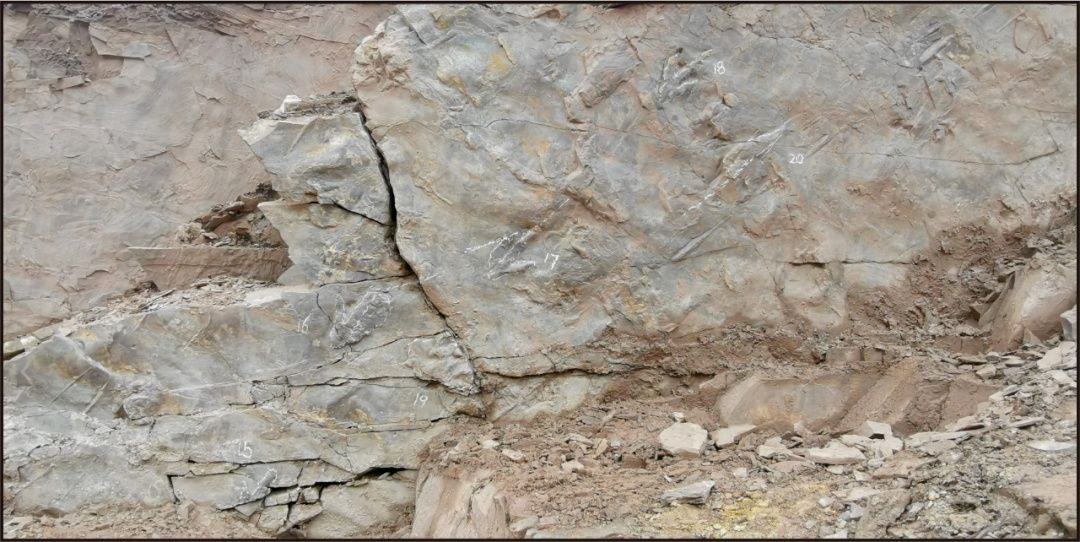
Trace photo of the Anetang fossil site
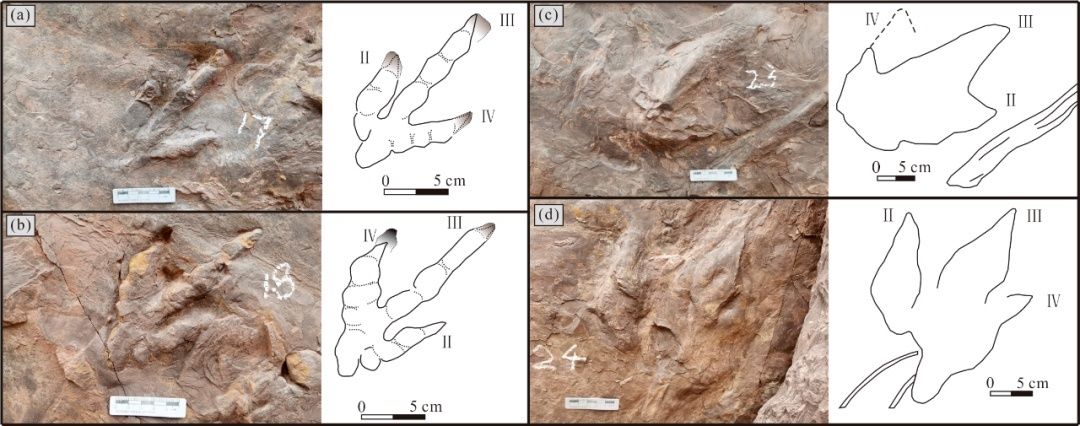
Photographs of fossil footprints (a-b: Agnetang Stiltosaurus; c-d: Theropod footprints of undetermined species)
“The surface area of the fossil outcrop is about 4m2, and the layer is nearly upright. Four continuous tracks of Agnetang Stiotaposaurus formed a row, and no wakes were found. Footprint length is less than 15 cm, width is about 8cm, length to width ratio is 1.85; The three functional toes had clear pads, sharp claws and similar widths, with a width of about 1.7cm. Toe Ⅲ was the longest with a width of about 12cm. The length of the other two toes was about half that of toe Ⅲ, but toe Ⅳ was slightly longer than toe Ⅱ with a very weak value. Ⅱ Obvious indentation at toe end; The Angle between the two lateral toes is about 50°.”
According to the discoverer Yao Huazhou and Dr. Li Yan-gui from Wuhan Geological Survey Center, the thin toes and sharp claw marks of the footprint fossil indicate that the trackmaker is a carnivorous dinosaur. Its morphological characteristics are closer to the typical type of the footprints of the most common stilbosaurus in China. Because it is the first theropod footprint fossil found in Tibet, it has obvious features and is beautifully preserved. It is of great significance to reveal the features of the potential dinosaur fauna in Tibet and the geological changes of the Qinghai-Tibet Plateau, so the fossil was named “Anetang Stilfosaurus” after the site where it was found.
Paleoenvironmental conditions of Middle Jurassic in Qamdo area
It was perfect for dinosaurs
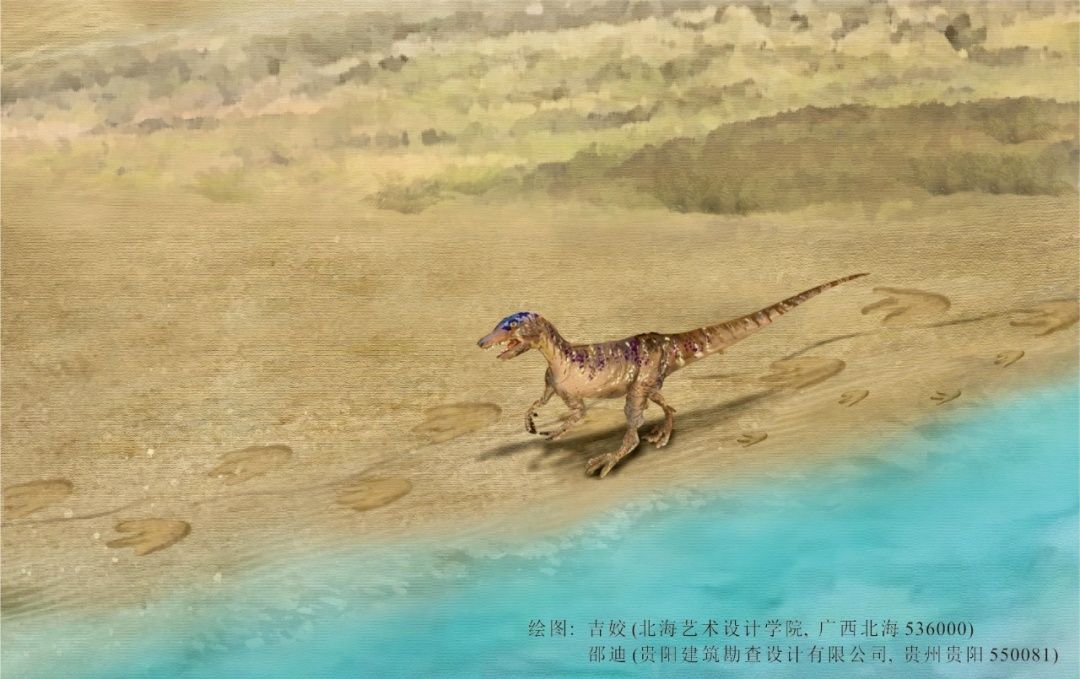
According to Dr. Li Yangui, the footprints of Stilposaurus are the most common small theropod footprints in the Jurassic period, which were found in contemporaneous strata in the adjacent Sichuan Basin and Central Yunnan Basin. The analysis of the footprint data showed that the body length of the trace-making dinosaur was about 1.3m, and the hip height was less than 0.7m. Surprisingly, on the surface of the same rock layer, a series of tracks composed of 9 continuous large theropod footprints (Theropoda igen. et isp.indet., genus undetermined) and clear wakes were retained, and the wakes showed regular ground wave swing between the tracks. In order to maintain the balance of the body, the tails of theropod dinosaurs usually do not touch the ground, and only under special circumstances, such as crouching, jumping, turning rapidly or slowing down, will leave very short trails. If the trails of theropod dinosaurs appear continuously and regularly, they can only be caused by the conscious behavior of the tracer dinosaur or its own body structure. At present, there are no reports on theropod footprints that can be compared with the preserved contrails, which is a new type. The present research results show that the features of dinosaur footprints in the Middle Jurassic in eastern Tibet are different from those in neighboring areas.
According to Yao Huazhou and Li Yangui, Kaluo District of Qamdo was an ocean 200 million years ago, and then it was transformed into an offshore inland basin due to the gradual uplift of the Earth’s crust. About 170 million years ago, the Qamdo area was dotted with many large and small lakes, and there were rivers running through them. The common cross-bedding, ripple marks and mud cracks are the common lacustrine and fluvial sedimentary structures. According to the analysis of the two rows of trace data, the motion speed of the dinosaur was very low and in a state of slow walking, and there is no evidence of tracking or hunting between the two tracers, they may just pass by the same lake shore. Due to the formation and preservation conditions of footprints, each step of the sediment moisture on the lake beach during the tracing process, the residue of footprints, drying and curing, late sediment filling and consolidation diagenesis, and fossilization is very critical. Different footprints are preserved on the same level, and the time interval between the two types of footprints must not be very long. It also reflects that the paleoenvironmental conditions of the Middle Jurassic in Qamdo area were suitable for dinosaurs to survive.






















